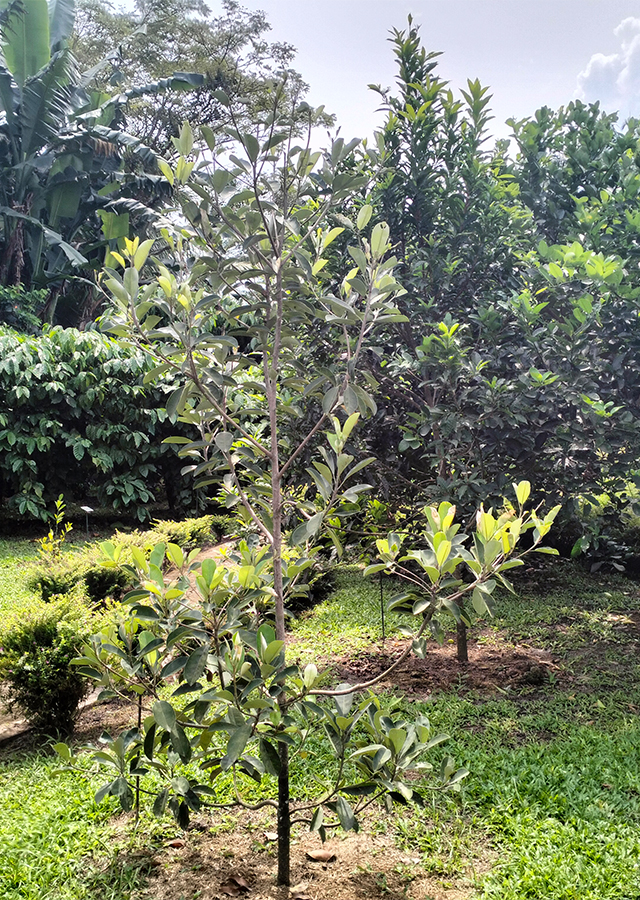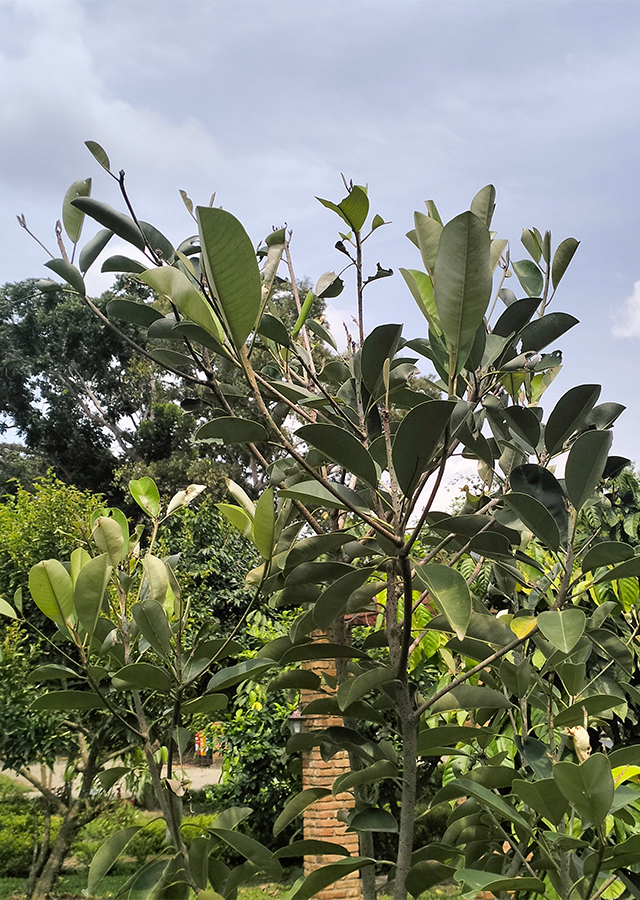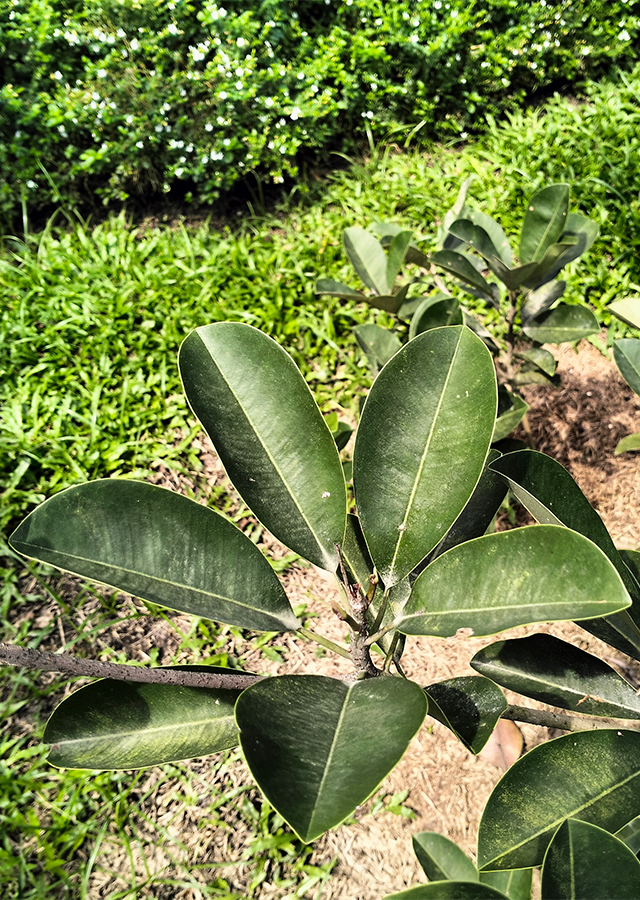Traditional Herbs from Diospyros nigra
reduce_fever
- Take enough black sapodilla leaves, wash them thoroughly.
- Boil until boiling.
- Let it warm or cool.
- Strain and drink.
treat_itchy_skin
- Take the bark and enough black sapodilla leaves, wash until clean.
- Crush until it becomes a paste.
- Pulse on itchy skin.
What is Diospyros nigra Looks like??



Parts of Diospyros nigra that could be used
- Leaves
- Bark
- Fruit
Diospyros nigra Distribution
Diospyros nigra or black sapodilla is a tropical fruit tree native to Mexico, the Caribbean, Central America and Colombia. Brought by Spain to the Philippines and now naturalized in Maluku and Sulawesi. It has been cultivated in Mexico and Guatemala and on a small scale in Hawaii, Florida and California. Produces (ripe) fruit that can be consumed fresh or made into ice cream, jam and desserts. Also used in drinks and liquors. The raw fruit is astringent, and can also be consumed as a vegetable after boiling. Black sapodilla fruit is known to be rich in vitamins C, A, E and low in fat. The fruit contains about four times more vitamin C than the average orange and 100 grams of sapodilla fruit provides almost 25 percent of the recommended daily intake of vitamin C. The vitamin E content of black sapodilla fruit is also higher than other tropical fruits such as strawberries. Black sapodilla is also a good source of fiber, calcium, phosphorus and potassium. Apart from being a nutritious food, this plant is widely planted as a shade plant and ornamental plant. In the Philippines and the West Indies, the unripe fruit is used as a fish poison.Agroecology of Diospyros nigra
Black sapodilla can grow and bear fruit in tropical and sub-tropical climates. Therefore, this plant can adapt and grow well in Indonesia. It is a plant that grows easily in the lowlands to the highlands, namely 200 - 1,800 m above sea level. This plant can adapt to various types of soil, provided it has sufficient humidity, lots of water content, but is well-drained so it will not stagnate. Able to tolerate light flooding but sensitive to drought. The soil used should also contain lots of minerals and be rich in nutrients. The desired level of soil acidity (pH) for planting black sapodilla plants ranges from 5.6 � 6.5. This plant also needs sunlight all the time. However, this plant must also be protected from windy weather and cold air. Grows best in areas with annual daytime temperatures ranging from 20 - 27 °C, but can tolerate 12 - 34 °C. Mature plants can die at temperatures of -2 °C or lower, while young plants will be seriously damaged at 0 °C. Prefers average annual rainfall in the range of 1,200 - 1,600 mm, but tolerates 1,000 - 2,400 mm.
Morphology of Diospyros nigra
- Taproot.
- The stem has black bark. The wood is yellowish to dark yellow with black markings near the core of the old stem.
- Leaves are rough, arranged alternately or alternately, elliptical-oval to lanceolate, leaves about 10-30 cm long, shiny dark green, leaf veins pinnate.
- Flowers are usually dioecious, meaning that some trees only produce male flowers and no fruit and other trees produce female or bisexual flowers, fruit. Some trees can produce male and female flowers (bisexual) on the same tree. Male flowers are usually in groups of 3 to 7, and female flowers are usually solitary. 6 cm with green calyx. Ovary with 8 to 12 carpels.
- Fruit resembles a tomato, round or oblate (depressed round) and about 5-15 cm in diameter still unripe and turn cloudy green when ripe. The flesh of the ripe fruit is brown to almost dark, with a soft texture similar to chocolate pudding, the taste is sweet.
- Seeds are brown or red-brown, flat, smooth. There are 1-10 seeds in each fruit.
Cultivation of Diospyros nigra
- Plant propagation through seeds and grafting.
- Seeds germinate in about 30 days and if the seeds are dried properly remain viable for several months.
- The best method of grafting is lateral grafting, leaving at least two leaves on the lower stem. The upper stem should have two and a half leaves and the buds should be woody, but with no new growth (grafting) should be placed in 70% shade and covered with a plastic bag for 3-4 weeks.
- Growing trees. from seed it begins to bear fruit at the age of 5 - 6 years, while grafted specimens can bear fruit at the age of 2 - 3 years.
Diospyros nigra, more details :
Chemical Content of Diospyros nigraRich in polyphenols, especially sinapic acid and proanthocyanidin, flavan-3-ols, flavon-3-ols, flavanonols, citric acid, ferulic acid, fumaric acid, carotenoids.
Benefits of Diospyros nigra
Treats asthma, dermatitis, hypertension, diabetes, atherosclerosis, insomnia, various skin conditions (leprosy, ringworm, itchy skin), reduces fever, improves the immune system, protects against heart disease and cancer, helps digestion (overcomes constipation), improves eyesight , strengthens bones and teeth and helps maintain muscle contraction and blood clotting, helping to lose weight. Has antimicrobial and antioxidant activity.
Simplisia of Diospyros nigra
Another Facts for Diospyros nigra :
Synonym of Diospyros nigraDiospyros sapota Roxb., Diospyros digyna Jacq., Diospyros edulis Lodd. ex Sweet
Habitus of Diospyros nigra
Tree. Tree, annual, up to 25 m high
Habitat of Diospyros nigra
- Forest
- Land
No comments:
Post a Comment